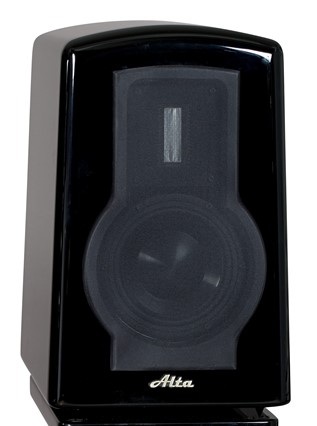Welcome to the NEW **10 Audio** website. Thanks for stopping by!
——-
Michael Levy, founder of Alta Audio which is located in Huntington, New York, has been designing and manufacturing loudspeakers for about 30 years. Mr. Levy is an avid concert goer, regularly attending live performances in New York City and other locations. Alta Audio’s purpose “has been and remains the exceptional reproduction of live and in-studio recordings that replicate the performing artist’s vision.” Let’s see if this lofty goal is being adequately addressed by the Celesta FRM-2M speakers.
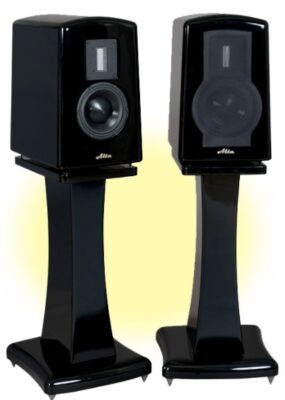
This $14,999 speaker is a 2-way design, and both the 6-inch diameter woofer and the ribbon tweeter are custom made for Alta Audio. The woofer has some special features. There is a large 3.1 inch Hexatech™ aluminum voice coil on a titanium coil bobbin, a Hybrid™ Neodymium/Ferrite magnet system, and a Coppersleeve Neolin motor. The ribbon tweeter offers clear, lightning fast, flat high-end response extending over an octave above the limit of human hearing. The finest available crossover parts are used in the extremely heavy (for a 2-way speaker) and impeccably finished cabinets. Factory stands, other than pictured, are available for $900. A 5-year warranty for the original purchaser covers the speaker upon registration.
Alta Audio utilizes two proprietary technologies in the Celesta: XTL Bass and DampHard Construction. XTL stands for Extended Transmission Line and differs from a common transmission line bass loading. Standard transmission lines are tuned to one frequency, much like a ported speaker is tuned to deliver specific performance at a specific bass frequency. According to Alta, this “can make the bass slow and distorted. The difference between the Alta XTL and a standard transmission line is that we tune the cabinet at multiple frequencies, not just one.” This should make the bass response more uniform while enjoying the benefit of deeper bass that is the hallmark of transmission lines.

Speaker enclosures vibrate due to the internal pressures resulting from the driver cone’s movement. This vibration muddies and distorts the driver’s output. While vibration might be acceptable in a musical instrument that produces music, such as a violin, it is never welcome in a device that reproduces music. DampHard construction seeks to eliminate the problems associated with other methods used to minimize these vibrations. “DampHard is a multi-layered, multi-density material that makes up the walls of all our high-end speaker cabinets. Where standard MDF or other materials would allow certain frequencies to resonate the cabinet, DampHard remains dead to virtually all vibration. This allows us to heavily cut down on a cabinet’s internal padding” which can also be a source of distortion.
Specifications:
Height: 17 inches including spikes (16.5 inches without spikes)
Width: 10.75 inches (widest point)
Depth: 15.5 inches (widest point)
Weight: 55 pounds each
Impedance: 4 ohms
Rated power: 50-200 Watts
Sensitivity: 87.5db / 2.83 Volts @ 1 Meter
Frequency Response: 29Hz to 47kHz
Spikes: Included
The review system includes Acoustic Signature Montana Neo turntable with Acoustic Signature TA-7000 Neo and Origin Live Agile tonearms, BMC MCCI ULN phono preamplifier; Soulution 325 with phono, Pass XP-22, and Benchmark HPA4 preamplifiers; Valvet E2 SE and Benchmark AHB2 power amplifiers; and Magico S1 MkII speakers which are lightly augmented in the low bass with a pair of JL Audio e110 subwoofers. Digital is handled by a custom Windows computer running JRiver Media Center with a USB-connected Audio-gd R7 mk.2 DAC. The audio cabling is Audioquest WEL Signature and Mogami interconnects and speaker cables. USB cables are StraightWire USB-F. Power protection and purification are provided by a PS Audio Dectet for the preamplifiers and source components, and a PS Audio Quintet for the power amplifiers. The Quintet includes a standard 1/8″ trigger connection enabling remote turn-on and -off of power amplifiers that lack a 12V remote trigger. Power cords include my DIY power cord, and Straight Wire Pro Thunder. An Acoustic Signature Grip, Origin Live Gravity, and the new Stillpoints Ultra-LPI mk2 record clamps were employed during the review period.
A break in period of 300-500 hours is recommended by the manufacturer. Break in of loudspeakers is heavily dependent on the volume of loudness used. New Celestas never sounded offensive, but there were gains in smoothness and musicality as the time increased. The Celestas sound very acceptable at the 150-hour mark, but transparency continually improved to 300 hours. As recommended, 500 hours of play time seemed to complete this chore.
Some care should be devoted to positioning the speakers for best performance. The distance from the back of the speakers to the rear wall is important for best bass response; both rear-vented speakers should be exactly the same distance from the wall behind them. Toe-in also has a noticeable effect on the bass, and an even greater effect on the sound stage. If the speakers are “pointed” straight ahead, sounds are easily locatable at the speaker positions and the sound stage mostly lacks a center image. Too much toe-in and the virtual stage is diffuse and shallow. Best results were realized when the inside sides are lined up with the listener. You will know when the speakers are positioned correctly when they seem to sonically disappear as the sources of sound. The Celestas deliver state of the art sound staging abilities when optimally positioned.
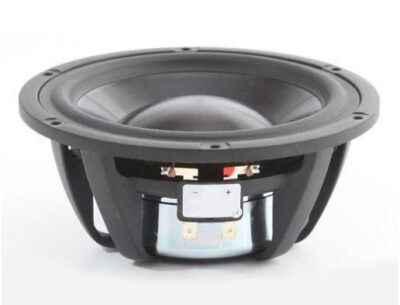
Readers of these pages are probably aware of my bias for 2-way speakers, which is discussed in detail in the review of the Magico S1 MkII speakers. (Suggestion: Read it.) As noted above, a pair of the excellent JL Audio subwoofers are used to “lightly augment” the bass of the Magicos, which already deliver bass into the 30 Hz range. Within a couple of hours of installing the Celestas with the subwoofers still in use, it was abundantly obvious that the subwoofers were not only unnecessary, but actually muddied and confused the bass sound of the Celestas.
Let me be clear: the Celesta FRM-2M has real bass. The bass is deep, fully supporting the claimed spec of 29 Hz. The bass also has real power and room-shaking ability, actually providing “bigger” bass than the usual configuration of the Magicos plus JL Audio subwoofers. The latter do offer just a bit more articulation or “tightness”, especially at high volume levels. In-room bass performance is dependent on the listening room’s dimensions and furnishings. My room is L-shaped, about 16 feet by 12 feet. Early in the audition, it felt that there was a bit too much bass – from a 6-inch woofer! But after the speakers, and this listener, were fully broken in and acclimated, the quantity of bass seemed to be not too little or too much, but just right.
While the Celesta’s bass has just a bit less leading-edge impact than the JL Audio’s 10-inch 1200 Watt powered subwoofers, the only other deficit is, well, nothing that wouldn’t be noticed without a direct comparison. The quality of the entire bass range is superb. This lets the listener hear bass instruments and their attendant harmonics being reproduced correctly, maybe for the first time. In the same way we expect full and proper resolution of voices and instruments in the midrange and treble, the Celestas provide that excellent, fully developed character throughout the bass and lower midrange, too.
The small woofer, with the transmission line loading, can produce full, deep bass when the system volume is below about 80 dBA SPL at the listening seat in my 12 x 16 ft room. As the volume is raised into the 80-85 dB SPL range and louder, that 6-inch woofer just can’t move the necessary amount of air to sound balanced with the midrange and treble. Deep bass is still present, just not as loud as needed at high volume levels. This is where the addition of the external powered subwoofers can provide a welcome assist. Even at volume levels over 90 dB SPL, long term exposure to which can cause permanent hearing damage, the subwoofer cones are not moving very much.
Listen to “Creatures of Love” on the Talking Heads album Little Creatures. The quality of the bass drum lets one hear very clearly the mallet strike followed directly by the vibration of the drumhead. This is outstanding bass resolution, with a perfect continuity of character and tone up an octave or two. Other examples of the excellent, tuneful bass can be heard on Sting’s Nothing but the Sun and Michael Jackson’s Thriller albums.
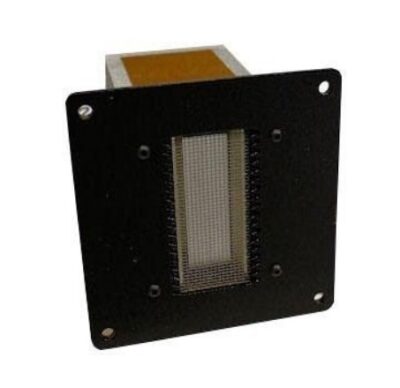
Throughout Thriller, especially on “Beat It” and “Billy Jean”, the speaker’s big dynamics and wonderfully transparent upper frequencies are very satisfying. The Celestas can also play quite loudly. When testing the power handling, the Celestas maintained composure even when the overload lights on the Benchmark amp, 190 Watts into 4 Ohms, momentarily flashed red. While listening at more normal volume levels, the Celestas easily pressurize the listening room at 85 dB SPL (sound pressure level) at the listening seat. Average levels of 85 dB can include peak levels of over 105 dB, so head bangers beware.
The quality and humanness of the midrange is very convincing while being competitive with the Magico speakers and their high-tech multi-wall carbon nanotube mid-woofer. The level of resolution and linearity is similar. Joan Armatrading’s vocals on “Always”, from her Hearts and Flowers LP are delivered with excellent richness and tremendous resolution. There is no harshness or glare probably because the Celestas have the poise to present any recording anomalies with clarity and transparency. The speaker’s excellent character with vocals is also demonstrated on “Mystified” from the Fleetwood Mac album Tango in the Night. The speaker’s transparency and linearity provide a clear window to each performer, with wonderful harmonies and insight.
Loudspeaker designers have tried, too-often unsuccessfully, to blend the sounds of a cone midrange with a ribbon tweeter. Designers have also not always achieved an acceptable transition from a cone midrange to some of the newer beryllium tweeters. The Magicos are an example of a successful design. Here, too, in the Alta Audio Celesta, we can fully enjoy a wonderfully successful pairing of cone and ribbon drivers.
Why is this important? The overall quality of a loudspeaker is defined by its tweeter because the tweeter is the highest resolution driver. Ribbon tweeters have long enjoyed the reputation of being the ne plus ultra tweeter technology due to their ultra-high resolution and speed which mimics live sound. The Celesta ribbon has even greater resolution than the excellent Magico beryllium tweeter. The Celesta tweeter will uncover very fine and musically significant detail in your recorded music that you never knew was there. Really! This is a noticeably higher level of performance than any dome tweeter ever heard in this listening room. The Celesta tweeter along with the seemingly perfect integration with the woofer results in a noticeably superior product.
The sound of an electric guitar, high on the E string, is so correct and believable. I can’t recall ever hearing the deep metal character of a guitar string that is so true to life. The same holds true for brass instruments – all of them. The clarity of French horns, trumpets, and their neighbors on the right side of the stage is remarkable, with a high reality factor in every performance.
The Celestas don’t disappoint in their dynamic performance. Large, impulsive sounds are properly reproduced and offer the power and drive that the music requires. The Celesta’s sound stage is huge: wide, deep and tall. Instruments and singers are easy to “point to” and locate precisely. The lateral stage often extends outside of the physical speaker locations. The depth of the stage is especially noteworthy. This requires exceptional phase performance and high resolution. These speakers often transform a listening session into a virtual reality musical experience.
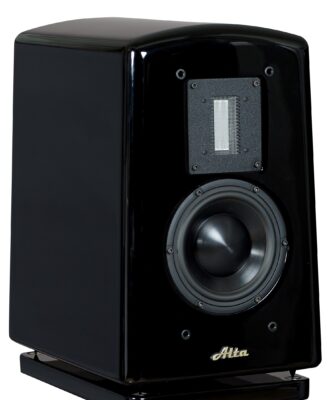
Single driver speakers can offer perfect cohesion and continuity across the octaves due to their lack of crossovers. However, they are often plagued with deficient bass performance and low resolution in the mid-upper treble. While there is a crossover in the Celestas, any negative contribution to the sound in the crossover region is extremely challenging to hear. Only when listening to very high-quality recordings with significant harmonic content – and tiring, focused effort – can any discontinuity be detected, and then, only rarely. This listener was quite impressed with the Magico’s outstanding blending of the cone mid-woofer with the tweeter, and the Celestas are on par. Again, on the Thriller album, listen to “Human Nature” and enjoy seemingly perfect continuity from low bass to upper treble. Michael Levy has engineered a completely successful – and rare – marriage of a cone mid-woofer and a ribbon tweeter. The Celesta might well be the closest transducers to sounding like a true, full range single-driver speaker available today. Bravo!
Never before has this listener been so aware of the large quality difference between CD-quality, 16-bit, 44.1 kHz recordings and the sound from a good LP, such as a Sheffield or Mobile Fidelity Sound Lab Original Master Recording. There is a downside to installing a speaker that is so revealing. Poorer recordings can be quite disappointing to listen to, while very good recordings can blow your mind and certainly raise the bar for the capabilities of your audio system. Unless you regularly listen to ribbon or electrostatic speakers, the resolution of the Celestas will undoubtedly be an eye (and ear) opening paradigm shift. Would you ever go back to watching black & white television? The Alta Audio Celesta FRM-2M speakers are not great in any particular musical characteristic because they are spectacular in their ability to deliver a compete sonic picture of the recording.
This is the longest review ever to appear here on 10 Audio. But it doesn’t require this many words to tell you that this 2-way speaker is a true full-range, extremely high resolution, and indisputably musical transducer that is an absolute must audition. They are this listener’s new long-term reference loudspeakers because I took out my checkbook and bought them.
Overall Rating: 10 LPs
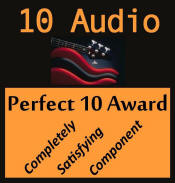
Link to manufacturer: Alta Audio
This review would not have been possible without the very kind support of Michael Levy at Alta Audio. Thank you, Michael!

